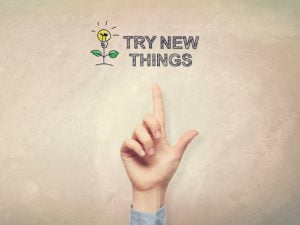Skill Development
From the chronicles
Lipreading the Desiderata
Desiderata has been a fixture in my home since forever. In remember as a child fixing my gaze on the last line: “Strive to be happy.” Can you lipread another two lines from Desiderata in the video below? Related post: Learn how to read lips #24
Continue readingLACE AI Pro Coaching Notes #6
Some people with hearing loss (PWHL) have vastly different word discrimination scores (WDS) between ears. If one ear is significantly poorer for WDS, I recommend initially training with the poorer ear only when using LACE AI. After 12-15 hours of training (roughly a month) with the poorer ear only, is there any improvement in Speech […]
Continue readingThree things to do when you get hearing aids
In hearing loss rehabilitation, there’s a focus on technology and the expertise of hearing care professionals. However, there is an additional piece to consider: the role that people with hearing loss (PWHL) themselves play in shaping the outcome. Having hearing loss myself, I have identified key areas where PWHL should focus their time and effort. […]
Continue readingLearn how to read lips No. 22
Context plays a vital role in lip reading. Knowing the topic, setting, what just happened, and what is about to happen will help you to anticipate what others are saying. Try it out in this video below! Related post: Learn how to read lips No. 21
Continue readingLearn how to read lips No. 24
Lipreading, like any skill, gets better with practice. A useful technique is to substitute sounds that look the same. Substitution skill will support you in making educated guesses. Watch this video to try it out! Check out my free Lipreading Challenge on YouTube. You can book a one-to-one lipreading lesson with me. Or, get two […]
Continue readingLACE AI Pro Coaching Notes #5
The default training activity in LACE AI is Speech in Noise. Unless it is changed, it will stay that way. To change the training activity from Speech in Noise to Rapid Speech or Working Memory, tap Train > Lesson and select one of Rapid Speech or Working Memory by tapping on it. This selection will […]
Continue readingFlat hearing loss and auditory training
Auditory training is rarely used in hearing loss rehabilitation. Identifying ideal candidates could help hearing care professionals gain experience and confidence with this tool and potentially recommend it to more people. Nadia Abbott, an audiologist, suggested that people with flat hearing loss might especially benefit from auditory training. Watch the video below for more information. […]
Continue readingLACE AI Pro coaching notes #4
In Rapid Speech and Speech in Noise training, you are asked to repeat what you heard aloud or silently to confirm your understanding. Then, you tap Confirm. The next screen displays the sentence that was just presented to you. You are then asked, ‘Is this what you heard?’ If you did not hear the sentence, […]
Continue readingLearn how to read lips No. 23
I am always amazed at how well people can read lips when given enough context. Some people need more than others. The joy of discovery is just as strong when they figure it out. Try it out with this video! Related post: Learn how to read lips No. 22
Continue readingChange your brain to hear better in noise
Researchers at Northwestern University demonstrated that the brain actually changed how it encodes pitch cues after auditory training with LACE. There was an enhancement in the transition between consonant and vowel sounds. Better speech-in-noise perception is directly linked to enhanced encoding of pitch cues in this transition period. These changes in the brain are lasting. […]
Continue readingAreas of interest for hearing improvement
Choose an area of interest to explore ways to improve your hearing




